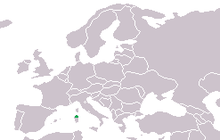
Hodgson's bat, also called the copper-winged bat or black-and-orange myotis, is a species of vesper bat in the genus Myotis, the mouse-eared bats. Favouring mountain forests, it is found throughout Central, Southeast, and East Asia, from Afghanistan to Taiwan. It is about 5 centimetres (2.0 in) long and is distinguished from most other species of bat in this range by its yellowish colouration.

The gold-striped salamander or golden-striped salamander is a species of salamander in the family Salamandridae. It is the only species of the genus Chioglossa. It is found in the north-west of Iberia at an altitude of up to 1,300 m. It is threatened by habitat loss.

The Persian brook salamander or Persian mountain salamander is an endemic amphibian species of salamander in the family Hynobiidae found in Iran and possibly Azerbaijan.
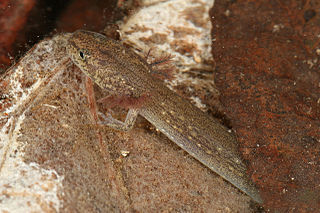
The Jollyville Plateau salamander is a species of salamander in the family Plethodontidae. It is also known as the Tonkawa Springs salamander. It is endemic to Travis and Williamson counties, Texas, United States. This species is perrenibranchiate, retaining its gills throughout life.

The Berry Cave salamander is a species of salamander in the family Plethodontidae, endemic to the Ridge-and-Valley Appalachians of eastern Tennessee in the United States. Its natural habitat is inland karsts where it lives underground. It is threatened by habitat loss.

The Tennessee cave salamander is a species of salamander in the family Plethodontidae, endemic to the Appalachian Mountains in the United States. Its natural habitats are streams in caves. It is threatened by habitat loss.
The Georgia blind salamander is a species of salamander in the family Plethodontidae. It is endemic to the south-eastern United States where its natural habitats are inland karsts, caves and subterranean habitats. It is listed as "Endangered" by the IUCN and is threatened by habitat loss.

The limestone salamander is a member of the lungless salamander family. Discovered in 1952, this species belongs to a genus endemic to California. It is endemic to a portion of the Merced River Canyon in Mariposa County, California.

The northern zigzag salamander is a species of salamander in the family Plethodontidae. It is endemic to the eastern United States and has been found in Illinois, Kentucky, Tennessee, Alabama, and Mississippi. The northern zigzag salamander's natural habitat includes temperate forests, rocky areas, and caves. It is threatened by habitat loss.
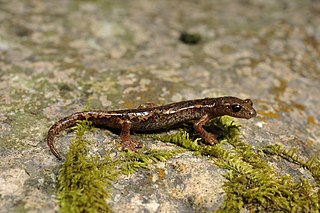
Ambrosi's cave salamander or the Spezia cave salamander is a species of salamander in the family Plethodontidae. Endemic to northwestern Italy, its natural habitats are temperate forests, rocky areas, caves, and subterranean habitats. It is threatened by habitat loss.
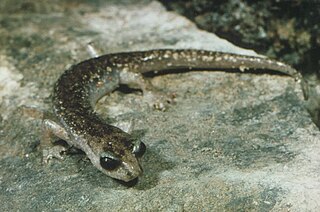
The brown cave salamander, also known as Gene's cave salamander, Sardinian cave salamander, or simply Sardinian salamander, is a species of salamander in the family Plethodontidae. It is endemic to Sardinia (Italy). Its natural habitats are temperate forests, rocky areas, caves, and subterranean habitats. It is threatened by habitat loss.

The imperial cave salamander, imperial salamander, odorous cave salamander, or scented cave salamander is a species of salamander in the family Plethodontidae. It is endemic to Sardinia.

The Italian cave salamander is a species of salamander in the family Plethodontidae. Endemic to Italy, its natural habitats are temperate forests, rocky areas, caves, and subterranean habitats. It is threatened by habitat loss.

The Supramonte cave salamander is a species of salamander in the family Plethodontidae, endemic to the island of Sardinia (Italy).
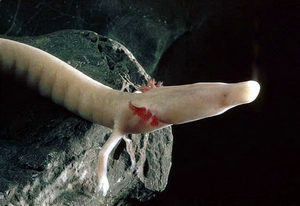
A cave salamander is a type of salamander that primarily or exclusively inhabits caves, a group that includes several species. Some of these animals have developed special, even extreme, adaptations to their subterranean environments. Some species have only rudimentary eyes. Others lack pigmentation, rendering them a pale yellowish or pinkish color.

Speleomantes strinatii, the French cave salamander, North-west Italian cave salamander, or Strinati's cave salamander is a small species of salamander found in northwest Italy and southeast France. It is very similar in appearance to the Italian cave salamander, but has a paler belly.

The Sarrabus' cave salamander or Sette Fratelli cave salamander or, is a species of salamander in the family Plethodontidae. It is found in southeastern Sardinia, east of Cagliari. The species was thought to have been a part of Speleomantes imperialis but was found to be a separate species.

